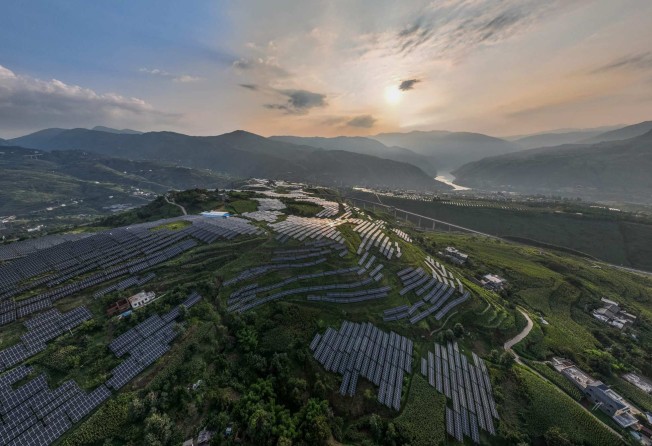
Climate change: majority of China-backed development bank AIIB’s financing to go to mitigation and adaptation by 2025
- Asian Infrastructure Investment Bank aims to allocate at least half of its annual financing to projects that tackle climate change by 2025, a senior executive says
- Emerging and developing economies are at risk of being left behind, the bank’s chief economist said in advance of the COP27 climate summit

Asian Infrastructure Investment Bank (AIIB), the China-backed multilateral development bank, aims to allocate at least half of its annual financing to projects that tackle climate change by 2025, according to a senior executive.
Last year, AIIB, which pools together resources from 105 member states to support projects aimed at improving economic and social conditions in Asia, allotted 48 per cent of its regular financing to climate mitigation and adaptation projects, said chief economist Erik Berglof. Its cumulative climate finance is estimated to reach US$50 billion by 2030.
It also aims to have at least half its approved regular financing go towards private-sector operations by 2030, up from 25 per cent last year, Berglof said in an interview ahead of the COP27 global climate summit scheduled to start on November 6 in Egypt.
“The private sector can contribute a lot of capital, skills, dynamism and experience,” he said, adding that AIIB’s aim is to provide not subsidies but rather a kind of insurance that protects promising climate-related projects in nations with high political and policy risks.

“We aim to provide stability to investment in nascent markets, and help get the biggest bang for the buck in terms of climate impact mitigation,” he said.
Multilateral development banks “must raise their game” to help emerging economies that need support to boost renewable energy production and build climate resilience, United Nations Secretary-General Antonio Guterres said early this month.
Developed nations promised during last November’s global climate summit in Glasgow to double adaptation support to developing countries to US$40 billion a year by 2025. Developing nations will need some US$300 billion annually for adaptation by 2030, according to the UN.
Emerging nations face a greater share of the adverse consequences of climate change relative to their historical contribution to global warming, AIIB said.
“Many emerging and developing economies are at risk of being left behind,” it said in a report released on Thursday. “It is not only about access to finance and appropriate technologies to address problems they did little to cause, but also about the ability to absorb these resources.”
Still, developing nations should also lift their own spending on climate projects, and not consider such outlays to be in conflict with economic development and growth, Berglof said.
“The fact that so many emerging market nations have come up with climate goals is a good sign, but they need to own their net zero transition [ambition],” he said. “They should see it as their opportunity for economic reform, an opportunity to push long-term sustainable development.”
Some 60 countries, including the 27 European Union members, had set targets to reach net zero carbon emissions as of March this year, according to Climate Action Tracker. Over 100 others have proposed or are considering doing so, and many cities, companies and financial institutions have also set ambitious targets to fight climate change.
Despite this, efforts by the most carbon-intensive sectors are far from enough to limit global warming to 1.5 degrees Celsius, the level considered necessary for the world to avert disastrous consequences, according to a study by Systems Change Lab.
Of 40 indicators assessed across the sectors, none are on track to achieve their 2030 targets, said the report published on Wednesday by the collaborative initiative, which is spearheaded by World Resources Institute and Bezos Earth Fund.
The sectors studied – electricity, buildings, industry, transport, forests and agriculture – together account for around 85 per cent of global greenhouse gas emissions.
China, the world’s largest renewable energy projects developer and equipment producer, can work with development finance institutions to make its know-how and equipment widely available to countries in need, Berglof said.
The country, the world’s largest carbon dioxide emitter, has successfully brought down the cost of wind and solar power in the past decade, he noted.
It can also do more to reduce the supply of domestic carbon emission permits to drive up the cost of emissions over time, which is key to phasing out fossil fuels, supporting emission reduction and stimulating removal technology innovation, he added.